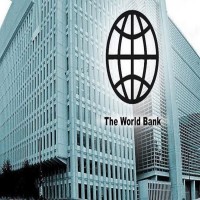Nepal's economy will grow by 0.6% in 2021: WB
COVID-19 hits informal sector hardest

By A Staff Reporter
Kathmandu, Oct. 9: The World Bank has projected that Nepal's economy would grow by only 0.6 per cent in 2021, inching up from an estimated 0.2 per cent in 2020 as lockdowns caused by COVID-19 have disrupted economic activity, especially tourism.
The growth is likely to increase to 2.5 per cent in 2022.
Informal businesses are the ones bearing the greatest brunt of the crisis, concluded the bank's latest South Asia Economic Focus, the twice-a-year regional update, released on Thursday.
Informal businesses make up around 50 per cent of enterprises in Nepal and are the main source of income for most of the labour force.
"Within this group, urban informal sector workers and self-employed households in urban areas are more vulnerable than rural households who can fall back on subsistence farming," read the report.
Most informal firms operate with limited savings, and owners may face the difficult choice of staying home and facing starvation during the lockdown or running their business and risking infection. These scenarios accentuate financial difficulties as well as the spread of COVID-19.
The report urges governments to design universal social protection as well as policies that support greater productivity, skills development, and human capital.
In that effort, securing international and domestic financing will help
governments fund crucial programmes to speed up recovery, concluded the report.
In the long term, it said that digital technologies could play an essential role in creating new opportunities for informal workers, making South Asia more competitive and better integrated into markets—if countries improved digital access and supported workers to take advantage of online platforms.
The report forecasts a sharper than expected economic slump across the region, with regional growth expected to contract by 7.7 per cent in 2020, after topping 6 per cent annually in the past five years.
"South Asia is set to plunge this year into its worst-ever recession as the devastating impacts of the pandemic on the region’s economies linger on, taking a disproportionate toll on informal workers and pushing millions of South Asians into extreme poverty," it read.
Regional growth is projected to rebound to 4.5 per cent in 2021.
India will witness the worst with -9.6 per cent growth in 2021.
Factoring in population growth, however, income-per-capita in the region will remain 6 per cent below 2019 estimates, indicating that the expected rebound will not offset the lasting economic damage caused by the pandemic.
The multilateral donor has also noted that unlike the previous recessions where falling investment and exports led to the downturn, this time private consumption, traditionally the backbone of demand in South Asia and a core indicator of economic welfare, will decline by more than 10 per cent, further spiking poverty rates.
A decline in remittances is also expected to accelerate loss of livelihoods for the poorest in some countries.
“The economic consequences of the pandemic and impact on livelihoods across Nepal is expected to be the most acute for informal workers or those without social security or assistance, who are more at risk of falling into extreme poverty,” said Faris Hadad-Zervos, World Bank Country Director for Maldives, Nepal and Sri Lanka.
He said that swift action was needed to provide incomes, social protection, and employment to support them. This includes key investment climate reforms to promote physical infrastructure and access to finance for the informal sector to shorten the transition to recovery.
Likewise, Hans Timmer, World Bank Chief Economist for the South Asia Region, said that COVID-19 would profoundly transform Nepal and the rest of South Asia for years to come and leave lasting scars in its economies.
However, there is a silver lining toward resilient recovery: the pandemic could spur innovations that improve South Asia’s future participation in global value chains, as its comparative advantage in tech services and niche tourism will likely be in higher demand as the global economy becomes more digital, he said.
Recent News

Do not make expressions casting dout on election: EC
14 Apr, 2022
CM Bhatta says may New Year 2079 BS inspire positive thinking
14 Apr, 2022
Three new cases, 44 recoveries in 24 hours
14 Apr, 2022
689 climbers of 84 teams so far acquire permits for climbing various peaks this spring season
14 Apr, 2022
How the rising cost of living crisis is impacting Nepal
14 Apr, 2022
US military confirms an interstellar meteor collided with Earth
14 Apr, 2022
Valneva Covid vaccine approved for use in UK
14 Apr, 2022
Chair Prachanda highlights need of unity among Maoist, Communist forces
14 Apr, 2022
Ranbir Kapoor and Alia Bhatt: Bollywood toasts star couple on wedding
14 Apr, 2022
President Bhandari confers decorations (Photo Feature)
14 Apr, 2022











